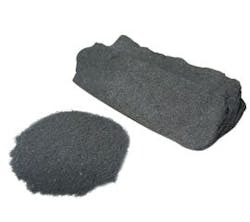Better Water for a Better Brew
About the author: Matthew Adomaitis is marketing manager, industrial food BU, for Calgon Carbon Corp. Adomaitis can be reached at [email protected] or 412.787.6780.
While there are many significant factors that affect the overall taste and odor of beer, there is one sometimes surprising yet vital element that plays a key role: the brewing water. In fact, the characteristics of brewing water have a great influence on the character of the beer. Recognizing this as an important step in its process, a prominent international brewer wanted to utilize a process that would allow for the highest quality water for brewing. Although its incoming process water came directly from a municipal drinking water source, it still contained residual taste, odor, disinfection byproducts (DBPs), and free and combined chlorine. Chlorine, which has been identified as a major factor affecting taste and odor in water, was targeted as a top priority for treatment.
In order to ensure a high-quality product, the brewer developed strict specifications and quality requirements for the water used in its brewing processes. Calgon Carbon Corp.’s technical sales and application engineering team worked with the brewer to identify economical solutions that—for more than 40 years—would meet these water quality specifications. In addition, the team evaluated various activated carbon products using modeling programs and in-plant trials. Engineering teams from the brewer and Calgon Carbon worked together to design the system, including equipment, vessels and activated carbon product. A variety of parameters were considered, including influent contaminant ranges, pressure drops, carbon bed life, flow rates and effluent quality standards.
Taste & Odor Free
The answer to meeting the brewer’s stringent water quality requirements was to treat incoming water with a system that includes Filtrasorb 200 activated carbon, a granular activated carbon (GAC) for the removal of contaminants from municipal drinking water. These contaminants include taste and odor compounds such as MIB and geosmin, organic compounds known to be precursors to DBP formation, DBP compounds such as haloacetic acids and trihalomethanes, contaminants of emerging concern such as endocrine-disrupting compounds and pharmaceutical and personal care products, and other targeted organic contaminants. Filtrasorb 200 is formulated to comply with all of the applicable provisions of the AWWA Standard for Granular Activated Carbon (B604) and Food Chemicals Codex. This product also may be certified to the requirements of ANSI/NSF Standard 61 for use in municipal water treatment facilities.
Chlorine Treatment With Activated Carbon
The removal of free and combined chlorine from water occurs through a chemical reaction on the activated carbon surface.
The activated carbon promotes the reduction of hypochlorous acid to chloride ions. As a result, the capacity of the carbon is not determined by normal adsorption parameters but by other considerations, such as flow rates, bed depths, and influent and effluent concentrations—as well as the carbon itself. Over time, the carbon eventually is consumed by the chlorine reaction and becomes degraded. Determination of the need for carbon replacement may be due to total organic carbon, taste, or odor breakthrough.
In these situations, fixed, downflow GAC beds typically are used. The rate of chlorine removal is highly sensitive to particle size; therefore, decreasing the size of the granular speeds up the reaction (12 by 40 mesh being more effective than 8 by 30 mesh). In these circumstances, pressure drop considerations also need to be reviewed. Other dissolved organics, taste and odor, and DBPs present in the water also can be removed by utilizing activated carbon.
Raising the Bar
Vessels containing Filtrasorb 200 activated carbon were installed at the brewer’s facilities throughout North America and have been successfully treating water for more than 40 years. These activated carbon systems have been able to handle the widely fluctuating influent conditions and provide the brewer with the water quality it demands for its beverages. This water treatment was implemented as a standard practice at all of its brewery locations. The brewer is able to globally maintain a consistent-quality beer, even with varying local water sources.
Sustainability Side Note
After GAC’s adsorptive capacity has been exhausted, it can be returned to Calgon Carbon for thermal reactivation, a process that involves a high temperature reaction with steam, which destroys the adsorbed organic compounds and restores the adsorptive capacity of the activated carbon. Through reactivation, the spent activated carbon can be recycled for reuse, eliminating the costs and long-term liability associated with disposal of spent GAC. There are several benefits of a reactivated product over a virgin carbon including economic and environmental. Reactivated GAC costs less than virgin GAC, it conserves natural resources and reduces CO2 emissions when compared with the manufacture of virgin GAC.
Download: Here
